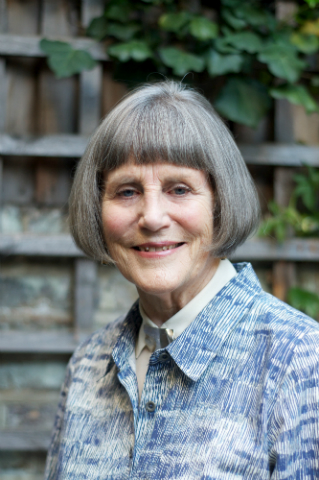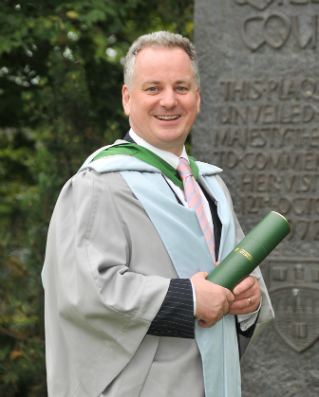Staff, students and politicians reflect on University’s past in new oral history project
Back to news
High-profile politicians including former First Minister, Lord Jack McConnell, and the late Labour MP, Tam Dalyell, feature in a new oral history project documenting the University of Stirling’s fascinating past.
Over the past 10 years, Stirling staff and students, along with notable public figures, have participated in audio and visual interviews telling the story of the University’s history.

Professor Angela Smith, who worked at the University from 1970 and 2006, is a founding member of the SURSA Oral History Group.
Organised by the Stirling University Retired Staff Association (SURSA), the project and its content is now available to the public through its website. Launched to celebrate UNESCO’S World Day for Audiovisual Heritage, the webpage provides an intriguing insight into the University’s past – from its foundations in 1967 through to campus life today.

Former First Minister, Lord McConnell, an honorary graduate of the University, says Stirling's campus community is "very special".
Professor Angela Smith, who worked at the University from 1970 until 2006, is a founding member of the SURSA Oral History Group. She said: “New university staff, students and their parents probably don’t spend much time imagining what the Stirling campus was like when the first building, Pathfoot, was a huge hole in the ground.
“But our oral history project sheds light on those early days through the words of those people who were present at the time. It explains how Stirling – then Scotland’s first brand new university for more than four centuries - established itself as a leader in higher education in Scotland, the UK and across the world.”
Airthrey
In 1963, the Robbins Report, published by the UK Government, recommended an immediate expansion of universities and several sites were considered for a new institution in Scotland – including Inverness, Falkirk and Ayr.
Former West Lothian and Linlithgow MP, Mr Dalyell, who died aged 84 in January this year, was a member of the committee that considered the siting of the new university.
Speaking in 2012 about the process, he said Jack Maclay, Secretary of State for Scotland between 1957 and 1962, was “crucial” in Airthrey Estate being picked.
“He was in favour of Stirling,” Mr Dalyell explained. “Very important too was Edward Boyle [then Minister of Education]. He was Vice-Chancellor of the University of Leeds and I remember him saying that, as the Secretary of State responsible for education in England, he really hesitated to get involved, but his private view was Stirling.”
Alastair Gentleman was one of the first students on campus when the University opened in 1967 and remembers how painters were still decorating as the semester got underway.
Insisting the committee made the correct decision, he said: “In retrospect, when you look at some of the other possible sites at the time, I think they got it absolutely right.
“I can’t imagine a better setting for a university than Stirling.”
Community
Lord McConnell, who served as First Minister from 2001 until 2007, graduated from Stirling in 1983 in Mathematics and Education. During his time at the University, he served as Student President and President of NUS Scotland.
Lord McConnell, an honorary graduate of the University, said: “Everybody who leaves here leaves with the feeling that they were part of a community and I think that’s a very special feeling. To be honest, I can’t think of anywhere else in the UK where that is as true as it is here.
“It is so consistent – I meet ex-Stirling students all over the world and every single one speaks about how they felt part of a community here, and long may it continue. Although the University has grown in size, I think having this campus as its core and having that sense of community among students and staff, and the sporting and cultural elements as well, makes this university very special.”
The project has also interviewed the University’s first Deputy Principal, Fred Holliday, who explains how Stirling broke the mould by enabling students to cross academic boundaries, while Professor John Forty, Principal from 1986 to 1994, also reflects on his time in office.
There are also insights from Matilda Mitchell, the first Principal’s personal assistant, who discusses her unorthodox interview and appointment, and Peter McEwen, the founding professor of psychology, who recalls giving the very first lecture.
In addition, there are interviews with the first director of the Macrobert Arts Centre, instructors of the Gannochy Sports Centre, as well as librarians, technicians and cleaners.
All interviews are available on the SURSA Oral History website, which allows users to search the audio and video clips by particular names or events.
Background information
Media enquiries to Greg Christison, Communications Officer, on 01786 466 687 or greg.christison@stir.ac.uk
